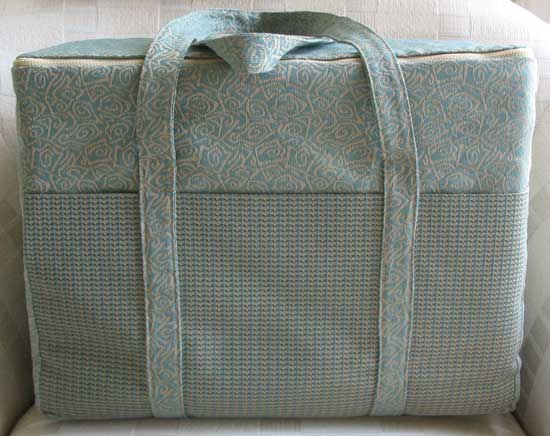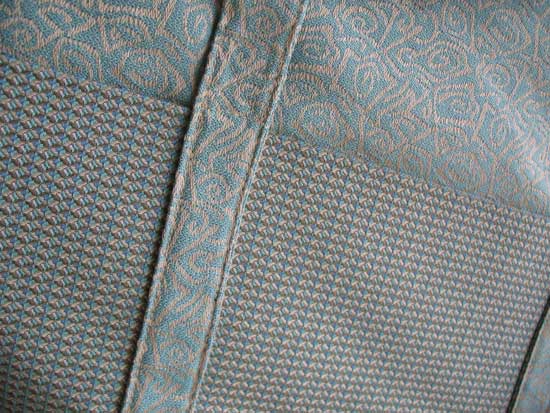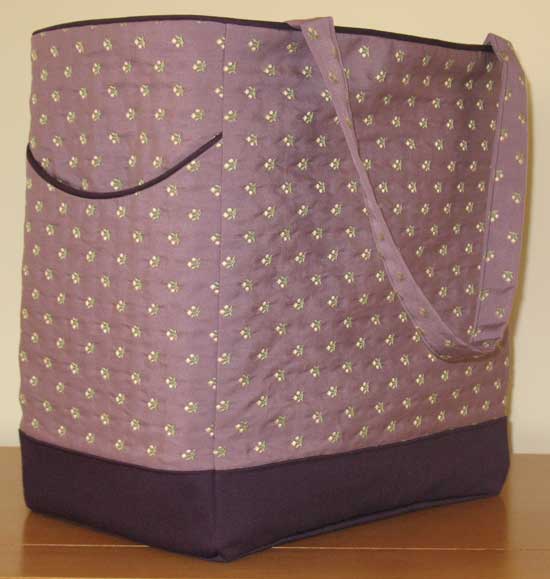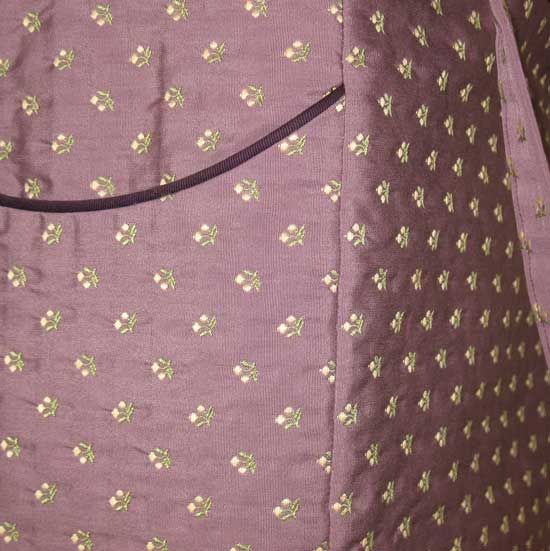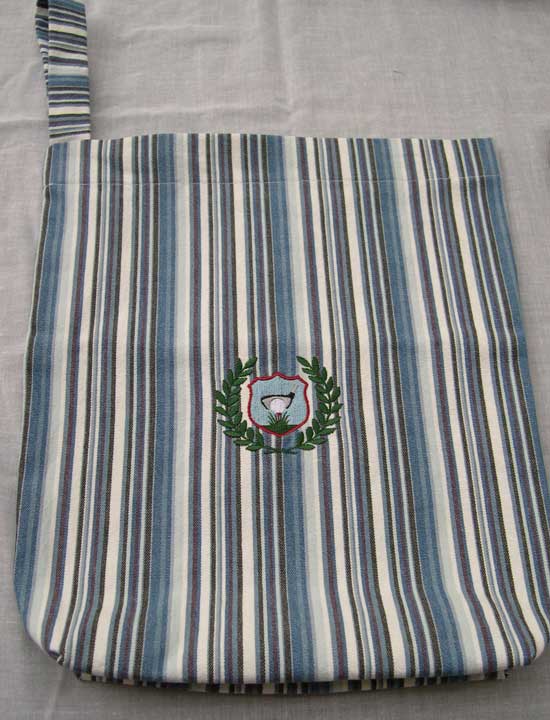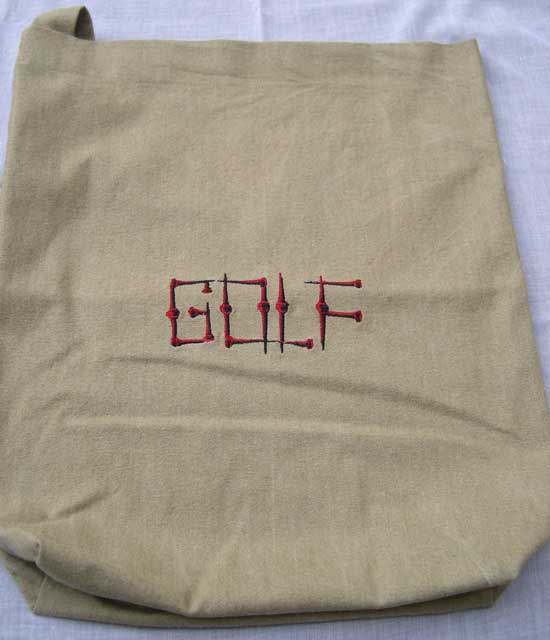The Valance
In Part 1 I showed you how to make a wooden cornice board and now it is time to create the valance. The fabric I worked with is a lovely drapery weight dobby, a microcheck print with a woven diamond pattern over top. The fabric was easy to work with and the pattern easy to match. In fact, I let the pattern dictate many of the design decisions such as where to place the pleats, choosing a spot that would allow for easy matching. "Length" and "width" are confusing terms on something like a valance. I will use length to refer to the longer measurement, the "running length", if you will, and width (or sometimes drop) to refer to how long the valance is from top hem to bottom hem.
I began by measuring the top edge of the cornice board from where it meets the wall, around the front and to the other wall. This will be my finished valance length. I determined how many and what depth of pleat I wanted (3 pleats at 3-inches each). I added the extra length needed for each pleat to the total length of the measured cornice and added 2” for seam allowances. (PS: it helps to draw diagrams of this as you go along, listing the various lengths). I wanted my finished drop to be approximately 9 inches. I cut the fabric that width plus 1” for the bottom hem, ½” for the top hem and 1” for seam allowances. I adjusted this width slightly based on the pattern repeat – I wanted the top and bottom edges to fall along a repeat line.
Cut your lining the same length as your outer fabric but cut the width 1.5” less than the width of the outer fabric.
Before I cut the fabric I checked my plan by folding a pleat in the fabric. I found that I would need to adjust the pleat width just a fraction to accommodate the pattern repeat. In the end I cut the fabric pieces longer than I needed so I could determine the finished length after the pleats were installed. If possible, cut your fabric on the lengthwise grain (railroading) to avoid piecing; if this is impossible then piece the fabric so the join falls inside one of the pleats and is therefore unnoticeable.
Here are my outer and lining fabric pieces laid out on my cutting table.
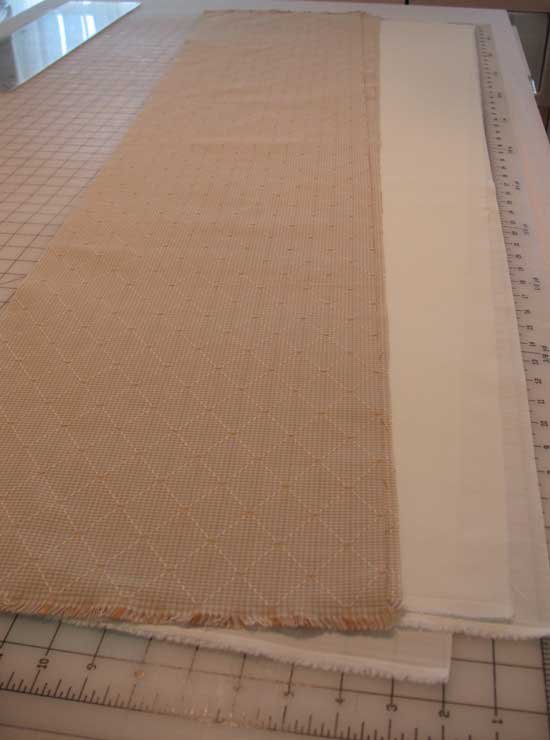
Align the long edges of the lining and outer fabrics and stitch together with ½” seam. When you turn the fabric right side out the hems will turn up to accommodate the shorter width of the lining fabric. I pressed a 1” hem at the bottom edge and a ½” hem along the top edge.
I measured the front edge of the cornice board and found the center, marking it with pencil for ease of installing the valance later. I drew a diagram of the valance and labeled the front part with this measurement. I found the center and marked it (pleat #1) and then placed the two other pleats equidistant on either side of the center, approximately centering them on the remaining width. Again, I adjusted these dimensions slightly during construction to accommodate the pattern repeat.
I made the first pleat in the center of my fabric strip, marking the placement with one of my favorite notions, Clo-chalk.
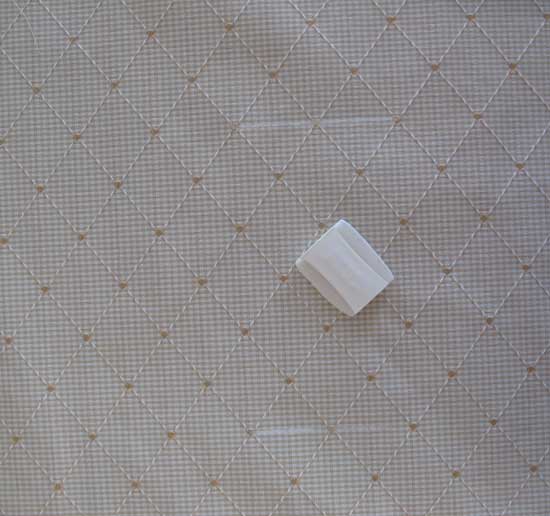
I carefully pressed this pleat and basted the top edge. I then marked, pressed and basted the other two pleats.
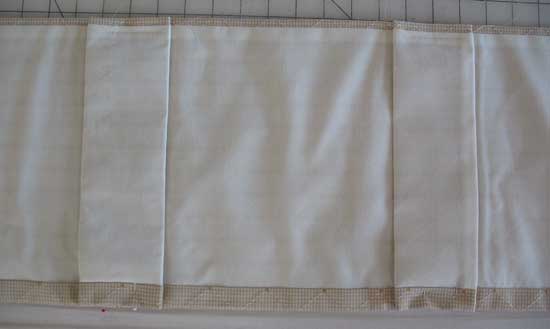
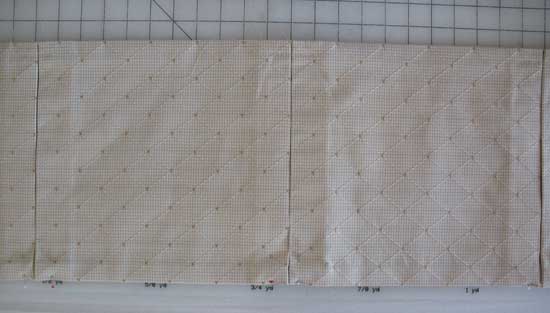
Once the pleats were in place I could measure from the center to both ends and mark the final, total length, allowing 1” on each end for the side hems. I folded in each end ½ twice and top stitched.
I applied the loop side of a piece of Velcro (the hook side had been applied to the cornice board previously) along the top edge, topstitching through all layers of the pleats.
I covered three 1-1/8” buttons for each valance with contrasting fabric and hand sewed them to the front of each pleat.

Next week I will write about the Roman shades I made to accompany this valance.
 Saturday, August 7, 2010 at 2:52PM
Saturday, August 7, 2010 at 2:52PM 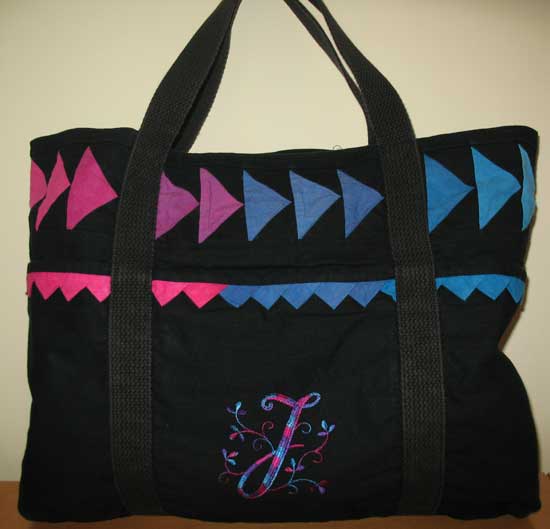
 bag of the week,
bag of the week,  hand-dyed,
hand-dyed,  quilting,
quilting,  sewing,
sewing,  tote in
tote in  Bag of the Week,
Bag of the Week,  dyeing,
dyeing,  quilting,
quilting,  sewing
sewing 









